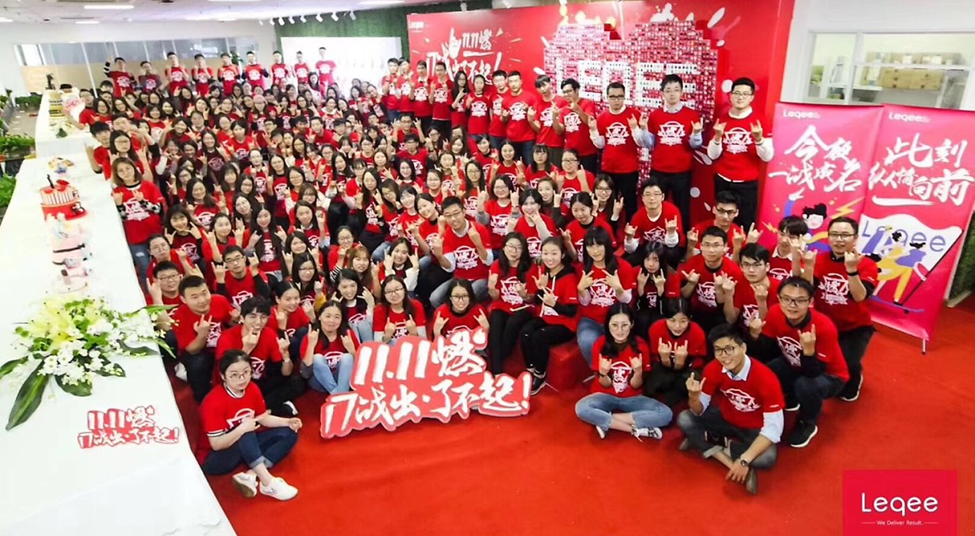Selling Cross-Border eCommerce to China is probably one of the most popular trends in the past few years in China.
Chinese consumers love to find and buy high-quality foreign products and foreign brand love to sell Cross-Border to eCommerce because it’s lower risk and lower cost.
However, there are many challenges with selling strictly Cross-Border to China. For one at scale, logistic becomes an issue, getting your product to your customer in China fast is very difficult.
But setting up your owner business and selling nationally through eCommerce in China is also very difficult.
On the one hand, China’s huge market attracts many foreign brands to enter into every year. On the other hand, more than 50% of foreign brands entering the Chinese market will fail and leave China within two years.
So, how can a foreign brand successfully penetrate China and sell in large scale without incurring a huge risk upfront?

In this article, we are very honored to have David Liu, CEO of Leqee which is one of the largest eCommerce Trade Partner in China with one of only two 6 Stars Tmall Flagship Store to share his insights on how to succeed in China with eCommerce as foreign brands.
Q. What exactly is a Trade Partner?
It is what it sounds. Trade partners are business or partners you can work with to help you sell your products in China usually via eCommerce through TMall, JD, etc. Every Trade Partner will have a different way to promote and sell your product in China.
Q. What is the main cooperation model for foreign brands in China?
Well, there are many ways to enter China but for if you’re selling physical goods and are looking to sell online then I believe you can either choose to work with a Trade Partner or work with distributors in China.
Working with a TP (Trade Partner):
Pros: Brand has the stronger control of Brand strategy and Plan (product, price, channel, and promotion), and usually most Trade Partners are commission based, meaning Trade Partner will usually only take a cut after the product has been sold.
The benefit of working with Trade Partner is that we work closely with the brand to make sure we execute and implement your China strategy strictly according to your brand’s requirement.
Cons: Working with TP will require the brand to take on more responsibility and allocate resources for marketing and brand strategy in China. This will usually mean that brands will need a higher level of investment of capacity and capability in China.
Distribution model:
Pros: You sell the whole sell to Chinese Distributor at a certain price and takes all responsibility for the whole sales process. It’s a simple and hands-off approach to enter the China market
Cons: The challenge with working with distributors or Chinese wholesaler is that you as a brand loss pretty much all control on your brand image, price, and positioning. 99% of the time distributors and wholesalers are only in it for the profit and will not actively product your brand image and position. As a result, many foreign brands have experienced long term negative damage to their brand image in China that will usually cost them a lot more money to fix.
There is no one right way to enter China, finding the right distributor will work and finding the right TP will also work. How do you want to approach entering China will depend on your readiness, willingness to invest in China, human and resource allocation, and ultimately what your long term goal and expectations are in China.
Q.Why For foreign brands should work with Trade Partner in China?
Firstly, the unique role played by TP (Trade Partner). Take Leqee for an example, we are the brand’s e-commerce trader in China – who will customize the e-commerce strategy that best suits the brand in China according to the positioning and tonality of the brand, including product strategy, marketing strategy, customer relationship strategy, from formulating to implementing the business plan. In one word, it is one-stop customized service.
Secondly, a good TP should be able to bring local insight, network, and resource to aid the foreign brand and become a competitive advantage of the foreign brand. Enabling foreign brands to survive and ultimately win in China. Trade Partner could help foreign brands to adapt their brand strategy to China’s market via low risk, quick and effective approach.
Q. What the important criteria for Foreign brands to select the right Trade Partner in China?
According to our experience, we recommend brand considering follow key factors
- E-commerce experience is a must: Brand should look for TP with good eCommerce experience especially in the category of your brand.
- Good Reputation: Because you’ll be leveraging the TP’s TMall flagship store, you want to make sure they have a good reputation with great customer review and great customer services.
- Synergy opportunity with the trade partner’s existing category brand portfolio and channel strength. For example, if the Trade Partner works mostly with pet food and you’re selling makeup then they’re probably not a great choice even if they have a highly reputable TMall or JD store.
- Deep understanding of your brand values, image, and message with a willingness to understand your culture for long term success.
Q. What are the key criteria for Trade Partners in China to select foreign brands?
The capacity of each trading partner is limited, so we are looking to working with the right strategic partners of foreign brands for shared growth and profit. Our strategic brand partners usually are
- In the category that is scalable, has the ability to grow fast and has a good competitive advantage.
- Has a decent brand presence in China with the opportunity to grow rapidly.
- Willingness to invest in China and have a decent understanding of China’s market and consumer.
Q. Any tips for foreign brands to select the right channel for marketing and distribution in China?
China’s e-commerce is massive and it is the biggest eCommerce market in the world right now and has a very complex ecosystem with platforms such as Jingdong(JD), Taobao, Xiaohongshu, Yunji Ministore, Haita, KOL, etc…
Depending on your brand’s current stages of development in China, selecting the right channels will be vitally critical.
For brands that are new to China, I suggest plan some grass seed first and build brand awareness via the content marketing on social media platforms such as Xiaohongshu, DouYin or Wechat.
At the same time, a foreign brand should also be thinking about using low barrier entry platforms such as Haitao and Daigou to begin selling, gather feedbacks and increase words of mouth of Chinese consumers of your brand in China.
Secondly, once you’ve seeded your field and have gained some brand awareness in China. The foreign brand could begin to select a few online channels to test market your products in China. The key is to start small with a controllable scope before expanding your coverage in China online.
Unlike 5 or 6 years ago, the online market in China is extremely competitive and it is very difficult for any brand to do the simply list your product and expect great results. It really takes time and patience for brands to build and monitor their brand presence in China.
Q. Every year, many foreign brands come and leaves the China market. According to your observation, what is the biggest difference between successful and unsuccessful?
I think there are three things could differentiate from those who succeed in China to that didn’t.
- Successful brands take their time to learn, study, and understand the local culture, market, and consumers
- Successful brands know the value of finding a good partner to work with for Chain… and is willing to trust the partner’s ability, local insight, and capability to help you succeed.
- Successful brands think long term and commit investment in the brand, marketing, R&D, and logistics in China.
Many brands lose because they have an unreasonable expectation and just want a quick win by copy and pasting their already successful products hoping it will work in China as well.
Q. Top 3 pieces of advice for brands who have the plan to enter China in the coming year
Although China has a massive population and the Chinese consumer has a growing demand for high-quality foreign brands, but the market is changing at a rapid pace which creates big opportunities as well as a big challenge. Here is my advice for foreign brands who want to achieve sustainable and long-term growth in the China market.
- Like I said before to be ready to learn and fully understanding of the complexity and competitiveness of China’s market. You must plan and willing to invest in the long-term to win. Being short-sighted is the fastest way to lose in China. We’ve seen many brands in China who have entered China and would run out of capital in the first year before they can see a return on their investments.
- Fully understand and study Chinese consumers. No foreign brand could succeed in China by simply copy and paste their existing successful model outside of China. It is necessary for a foreign brand to treat China as a new start up and invest in R&D every year to develop products suitable for Chinese consumers. The Chinese market is very competitive. In addition to brand explosions and availability, we should also actively develop second echelon products to enrich the brand product structure.
- Learn to communicate with Chinese consumers and cater to their real needs. China is changing super-fast and the world is changing super-fast. Marketing, social media, KOL, channels are changing so fast that you must be flexible and adapt your marketing quickly to the rhythm.
About Leqee:
China’s leading one-stop e-commerce service provider company. Founded in 2009, it is China’s largest fast-moving consumer goods business operation company, and more than 70 foreign brand customers’ Chinese e-commerce strategic partners, including Unilever, Heinz, Pfizer, and other famous brands.
The core services provided include flagship store excellent operations management, online channel distribution, and coverage, brand digital marketing and technology solutions. Please visit the company’s website for more details at www.leqee.com.
